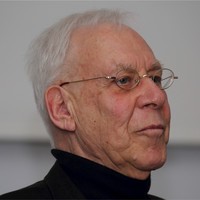Acoustic and optical plasmon excitations in cuprate and ruthenate “strange metals” studied by EELS and RIXS.
Abstract:
Conventional metals show at low temperature a scattering rate which is quadratic in temperature or energy. In “strange metals”, the scattering rate is enhanced at low energies leading to a linear dependence due to correlation effects. This is possibly related to strong quantum fluctuations which are also supposed to mediate superconductivity in cuprates and Sr2RuO4. There are theories based on holographic calculations which predict an over-damping of plasmons due to a low-energy continuum. These theories are supported by recent EELS measurements in reflection (R-EELS). The results are at variance with our early EELS experiments in transmission (T-EELS) and RIXS data on various cuprates and more recent T-EELS data on Sr2CuO4. In all cases we see well-defined optical plasmons which decay into particle-hole excitations only for large momentum in the range of the classical Lindhard continuum. The dispersion of the optical plasmon can be well described within the RPA without a mass renormalization. In contrast, the acoustic plasmon dispersion in p-type and n-type cuprates, studied by RIXS can be explained using a mass renormalization of m*=2-4, also detected by ARPES at low energies. These conflicting results can be described by an energy dependent renormalization of the charge carrier mass, being large at low energy due to a coupling to spin excitations and turning small in the energy range of the optical plasmon well above the spin fluctuation energy. In addition, recent results on the plasmon width are discussed.
About the speaker:
Prof. Dr. Jörg Fink is Emeritus Professor of Experimental Solid State Physics at TU Dresden and former Director at the Leibniz Institute for Solid State & Materials Research (IFW Dresden). He is very well-known for his development of High-Resolution Electron-Energy-Loss and Angular-Resolved Photoemission Spectroscopy. With these methods, he has made pioneering contributions to the study of the electronic structure of carbon systems, superconductors, magnetic and topological materials. He has authored over 600 publications and served on editorial boards of leading physics journals. He is a Fellow of the American Physical Society and the Institute of Physics (UK).
The colloquium will take place on Wednesday, November 26, at 2:00 PM in room BSC 003 at the Bâtiment des Sciences, Limpertsberg campus.
Prior to the colloquium, we warmly invite you to a coffee break at 1:30 PM in the entrance hall of the Bâtiment des Sciences. This is a fantastic opportunity to engage with Prof. Dr. Jörg Fink and connect with fellow attendees over a cup of coffee. For logistics purposes, please register for the coffee break by November 21 using the following button.
If you are unable to join us in person, you can still participate in the event remotely through the Webex link below.
